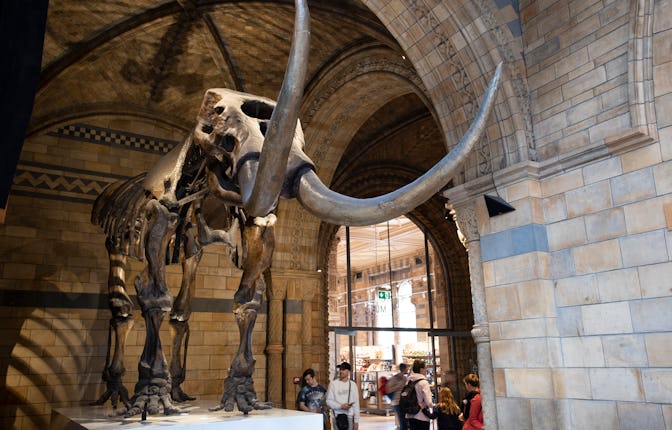Giant Sloths, Mastodons, and Humans, Oh My! How These 3 Coexisted In The Americas
Giant Sloths and mastodons may have come to the Americas earlier than thought — and the humans were fine with it.

Imagine a world where colossal creatures roamed the land, coexisting with early humans. This was the reality in the Americas, where giant sloths and mastodons thrived alongside our ancestors for thousands of years. Recent discoveries have shed light on this period, suggesting that these massive beasts were not just figments of ancient lore but real animals that shared their habitats with human beings.
A Closer Look at Giant Sloths
Giant sloths were not your average tree-hangers. These prehistoric relatives of today’s slow-moving sloths weighed up to 4 tons (3.6 metric tons) and could reach heights comparable to a modern-day elephant. Unlike their sluggish descendants, these behemoths could move surprisingly fast when startled, brandishing enormous claws that could easily defend against predators or even intimidate early human hunters.
The most notable species, Megalonyx jeffersonii, roamed North America during the Pleistocene epoch. Fossil evidence suggests they were herbivorous creatures that primarily fed on leaves and shrubs, but their size made them formidable when threatened. Imagine encountering one of these giants while foraging for food — it would have been both awe-inspiring and terrifying.
Mastodons, The Gentle Giants
Alongside giant sloths, mastodons also populated the landscape during this era. These mammoth-like creatures were similar to elephants but had distinct features such as long, curved tusks and a stocky build covered in shaggy fur. Mastodons primarily grazed on shrubs and trees, making them an essential part of their ecosystem.
Recent archaeological findings indicate that mastodons interacted with early humans as well. Evidence from sites across North America shows signs of human hunting practices targeting these magnificent animals for sustenance. Tools found alongside mastodon remains suggest that they played a significant role in the diet of prehistoric peoples — much like how modern humans rely on livestock today.
A Long Coexistence
The coexistence of giant sloths, mastodons, and early humans paints a vivid picture of life during this time. As hunter-gatherers roamed the Americas in search of food and shelter, they encountered these massive creatures regularly. This interaction likely influenced both species’ behaviors — humans adapting hunting strategies while giant sloths and mastodons may have altered their movements to avoid becoming prey.
Interestingly enough, recent discoveries hint at more complex relationships than mere predator-prey dynamics. Some researchers propose that humans might have utilized fire to manage landscapes or even drive herds toward certain areas for easier hunting opportunities.
New Discoveries Challenge Old Theories
As archaeologists continue to unearth fossils across North America, our understanding of how these ancient giants coexisted with humans is evolving rapidly. Recent findings challenge long-held theories about when humans first arrived in the Americas and how they interacted with megafauna like giant sloths and mastodons.
For instance, ancient human fossils discovered in eastern China display features reminiscent of both primitive and modern Homo sapiens — raising questions about migration patterns across continents during prehistoric times. Such revelations invite us to reconsider narratives around humanity’s journey across the globe while highlighting our shared history with extraordinary creatures like giant sloths.